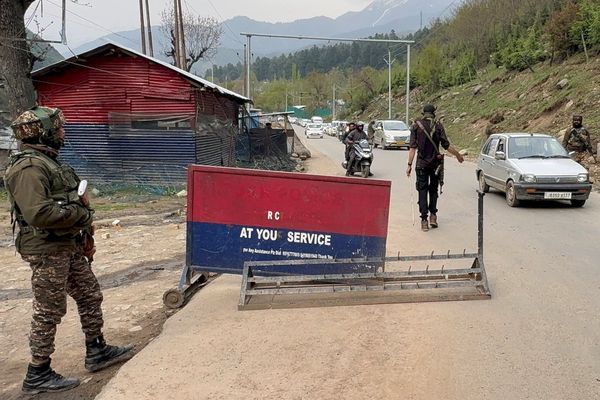Australia might be a sunburnt country — but researchers say that, paradoxically, the nation's reputation for summer warmth is likely one of the reasons why so many homes feel cold during winter.
A new study by the Adelaide-based Australian Centre for Housing Research found more than 80 per cent of the homes surveyed across five "temperate" states failed to meet a World Health Organisation (WHO) minimum recommendation for winter warmth.
The finding is based on a sample of 100 homes in New South Wales, South Australia, Tasmania, Victoria and Western Australia, where residents were sent sensors to track household temperatures last winter.
"We posted them data loggers, so temperature sensors, and we instructed them on where to place them and how to set them up," co-author Lyrian Daniel told ABC Radio Adelaide's Stacey Lee and Nikolai Beilharz.
"Then we asked them to post them back, and we could look at the data, so it was almost a citizen science approach."
Researchers wanted to see how often, and how many, homes were below 18 degrees Celsius — a benchmark defined by the WHO as a "safe and well-balanced" indoor temperature for homes during winter.
"That's when we start to see the health effects of being in cold temperatures kick in," Dr Daniel said.
Of the 100 homes, 81 recorded average temperatures below 18C, including one home in Tasmania which averaged just 10.9C over the three winter months of 2022.
According to the findings, which were published in journal Energy Research and Social Science, "winter indoor temperatures averaged just 16.5" degrees across all of the 100 homes.
The findings were consistent "across the income spectrum", and the researchers suggested that one of the reasons that homes were so cold was because of the perception that Australia is a "warm climate country".
"We haven't really required or mandated that our homes are super-insulated … and protect us from the weather, like our northern hemisphere counterparts," said Dr Daniel, who is an associate professor in architecture at the University of South Australia.
"We have this mentality that our winters are fairly mild and they're not too bad, even though we all know at this time of year we start going, 'Oh my goodness, it's so cold'."
Fridge becomes heater in freezing conditions
Adelaide Hills resident Emma Farnam, who has lived in the small town of Nairne for the past three years, said she was not at all surprised by the findings.
The mother-of-three said she would "never forget" the coldest morning she has experienced, when she was warmed up by her refrigerator.
"I went to the fridge to get the milk out and the warm air of the fridge hit me and I realised that the house was colder than what the fridge was," she said.
"It was a perfectly functioning fridge, it was a cold as it needed to be, but the house was colder."
Ms Farnam said compounding the problem was cost of living pressure, driven by reduced housing affordability and the rising costs of electricity and fuel.
"We've got a wood fire but we only light that on weekends, because I can't afford the wood, and we do have a little reverse-cycle that I put on every now and then," she said.
"But … there's always another jumper or blanket.
"You just get on with it — it's winter, it's cold, it's supposed to be.
"It is a problem that probably pales in comparison to those who are struggling to have their house, let alone heat it."
Dr Daniel said the 100-home survey was part of a much more extensive study taking into account findings from 500 homes.
She said while many Australians might be inclined to just put up with the cold, that stoical attitude is also potentially a contributing factor.
"When we do have that ability to put another jumper on, to make decisions about what we might like to do before putting the heater on, that's OK," she said.
"[But] the reason that we're concerned about this problem is, as well, for people who aren't able to make those decisions, and they're using those strategies out of necessity rather than choice."







